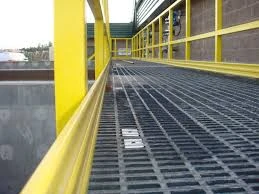
-
 Afrikaans
Afrikaans -
 Albanian
Albanian -
 Amharic
Amharic -
 Arabic
Arabic -
 Armenian
Armenian -
 Azerbaijani
Azerbaijani -
 Basque
Basque -
 Belarusian
Belarusian -
 Bengali
Bengali -
 Bosnian
Bosnian -
 Bulgarian
Bulgarian -
 Catalan
Catalan -
 Cebuano
Cebuano -
 China
China -
 China (Taiwan)
China (Taiwan) -
 Corsican
Corsican -
 Croatian
Croatian -
 Czech
Czech -
 Danish
Danish -
 Dutch
Dutch -
 English
English -
 Esperanto
Esperanto -
 Estonian
Estonian -
 Finnish
Finnish -
 French
French -
 Frisian
Frisian -
 Galician
Galician -
 Georgian
Georgian -
 German
German -
 Greek
Greek -
 Gujarati
Gujarati -
 Haitian Creole
Haitian Creole -
 hausa
hausa -
 hawaiian
hawaiian -
 Hebrew
Hebrew -
 Hindi
Hindi -
 Miao
Miao -
 Hungarian
Hungarian -
 Icelandic
Icelandic -
 igbo
igbo -
 Indonesian
Indonesian -
 irish
irish -
 Italian
Italian -
 Japanese
Japanese -
 Javanese
Javanese -
 Kannada
Kannada -
 kazakh
kazakh -
 Khmer
Khmer -
 Rwandese
Rwandese -
 Korean
Korean -
 Kurdish
Kurdish -
 Kyrgyz
Kyrgyz -
 Lao
Lao -
 Latin
Latin -
 Latvian
Latvian -
 Lithuanian
Lithuanian -
 Luxembourgish
Luxembourgish -
 Macedonian
Macedonian -
 Malgashi
Malgashi -
 Malay
Malay -
 Malayalam
Malayalam -
 Maltese
Maltese -
 Maori
Maori -
 Marathi
Marathi -
 Mongolian
Mongolian -
 Myanmar
Myanmar -
 Nepali
Nepali -
 Norwegian
Norwegian -
 Norwegian
Norwegian -
 Occitan
Occitan -
 Pashto
Pashto -
 Persian
Persian -
 Polish
Polish -
 Portuguese
Portuguese -
 Punjabi
Punjabi -
 Romanian
Romanian -
 Russian
Russian -
 Samoan
Samoan -
 Scottish Gaelic
Scottish Gaelic -
 Serbian
Serbian -
 Sesotho
Sesotho -
 Shona
Shona -
 Sindhi
Sindhi -
 Sinhala
Sinhala -
 Slovak
Slovak -
 Slovenian
Slovenian -
 Somali
Somali -
 Spanish
Spanish -
 Sundanese
Sundanese -
 Swahili
Swahili -
 Swedish
Swedish -
 Tagalog
Tagalog -
 Tajik
Tajik -
 Tamil
Tamil -
 Tatar
Tatar -
 Telugu
Telugu -
 Thai
Thai -
 Turkish
Turkish -
 Turkmen
Turkmen -
 Ukrainian
Ukrainian -
 Urdu
Urdu -
 Uighur
Uighur -
 Uzbek
Uzbek -
 Vietnamese
Vietnamese -
 Welsh
Welsh -
 Bantu
Bantu -
 Yiddish
Yiddish -
 Yoruba
Yoruba -
 Zulu
Zulu
Durable Fiberglass Tanks for Effective Liquid Storage Solutions and Applications
The Advantages of Fiberglass Holding Tanks
In the modern world, effective waste management and storage solutions have become increasingly important due to environmental concerns and the growing demand for sustainable practices. One of the most advanced materials employed in the construction of waste holding tanks is fiberglass. Fiberglass holding tanks offer a multitude of benefits, including durability, corrosion resistance, lightweight properties, and versatility, making them an optimal choice for various applications, from residential to industrial settings.
Durability and Longevity
One of the standout features of fiberglass holding tanks is their exceptional durability. Unlike traditional materials such as steel or concrete, fiberglass is non-corrosive and highly resistant to chemical reactions from harmful substances. This characteristic enables fiberglass tanks to maintain their structural integrity over an extended period, even when exposed to aggressive chemicals. While other materials may degrade or corrode over time, a fiberglass tank can last for decades with minimal maintenance, offering significant long-term savings.
Moreover, fiberglass tanks are resistant to temperature fluctuations. This stability means that they can function effectively across a wide range of environments, from freezing temperatures in cold climates to the scorching heat of deserts. Their ability to withstand harsh weather conditions makes fiberglass tanks a reliable option for a variety of applications, including agricultural, industrial, and municipal waste management.
Lightweight and Easy to Transport
Another advantage of fiberglass holding tanks is their lightweight nature. Fiberglass is significantly lighter than other materials such as concrete or steel, which contributes to easier handling and transport. This lightweight characteristic reduces the costs associated with transportation and installation. Additionally, the lightweight nature of fiberglass allows for simple and less labor-intensive installation processes. Since heavy machinery is often not needed to position these tanks, project timelines can be significantly shortened, allowing for quicker deployment and functionality.
Corrosion and Chemical Resistance
fiberglass holding tanks

Fiberglass holding tanks are lauded for their resistance to corrosion caused by various chemicals. Given the nature of the materials stored in holding tanks, including waste products, sewage, and various industrial chemicals, selecting a tank material that can withstand these elements is crucial. Fiberglass's resistance to corrosion ensures that the integrity of the tank remains intact over time, minimizing the risk of leaks and environmental contamination. This feature is especially beneficial in industries such as oil and gas, where the storage of hazardous materials is common.
Versatility Across Applications
Fiberglass holding tanks are not limited to a single application; their versatility is one of their greatest strengths. They are suitable for various uses, including wastewater treatment, rainwater harvesting, agricultural storage, and chemical processing. Fiberglass tanks can be manufactured in various sizes and shapes to fit specific needs, which makes them adaptable for both large-scale industrial operations and small residential applications.
For example, in agricultural settings, fiberglass tanks can be used for the storage of fertilizers and pesticides, which often require secure containment to prevent spills and leaks. In wastewater treatment facilities, fiberglass holding tanks play a crucial role in storing and managing both treated and untreated waste, ensuring compliance with environmental regulations.
Cost-Effectiveness
While the initial investment in fiberglass holding tanks may be higher than some alternatives, the long-term savings associated with their durability and low maintenance make them a cost-effective choice. Since they do not require frequent replacements and have lower maintenance needs due to their resistance to corrosion and environmental factors, the total cost of ownership becomes significantly lower.
Conclusion
In conclusion, fiberglass holding tanks represent a significant advancement in storage solutions. Their durability, lightweight nature, corrosion resistance, versatility, and long-term cost-effectiveness make them an ideal choice for various applications across different industries. As environmental awareness grows and the necessity for sustainable waste management solutions increases, the adoption of fiberglass tanks is likely to continue. Whether for residential, agricultural, or industrial use, fiberglass holding tanks provide reliable and efficient storage options that meet the demands of modern society while prioritizing eco-friendliness and safety.









